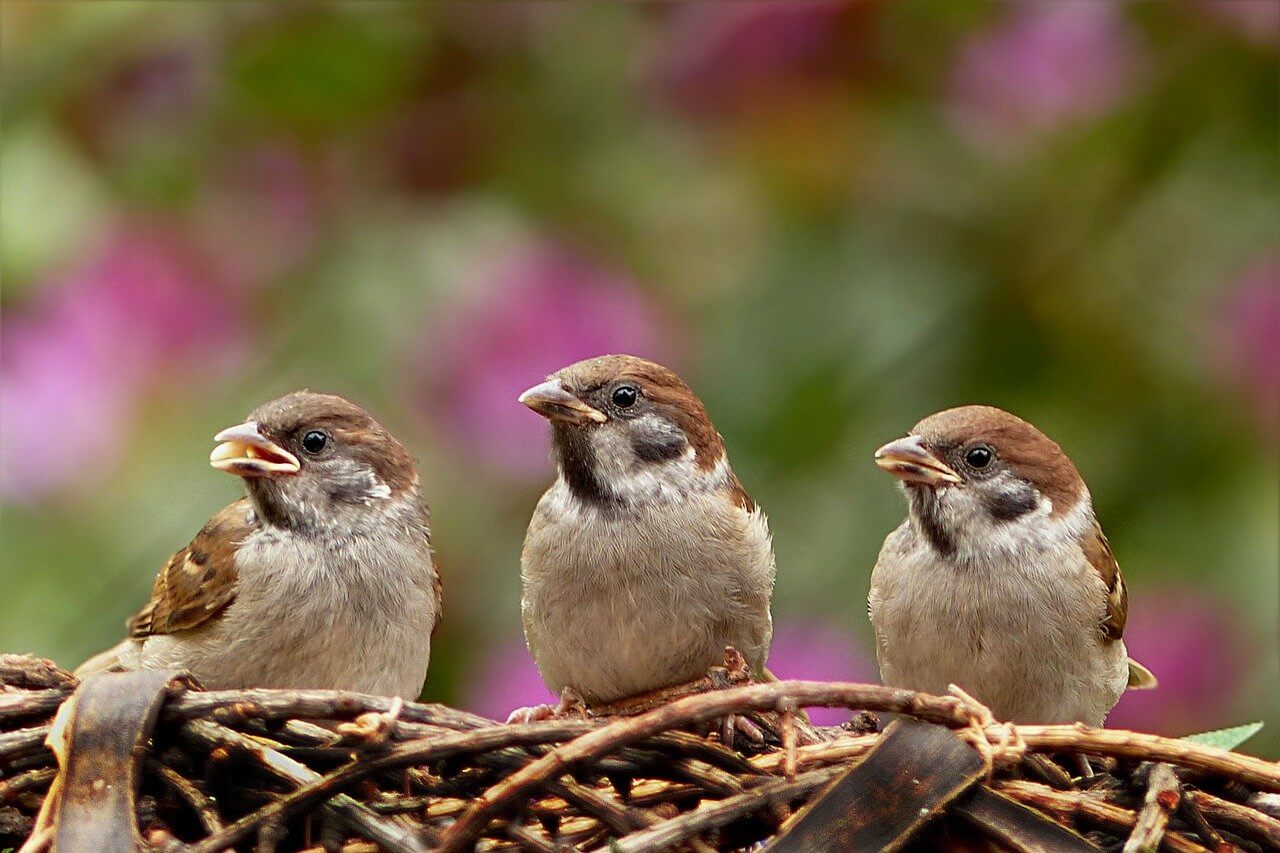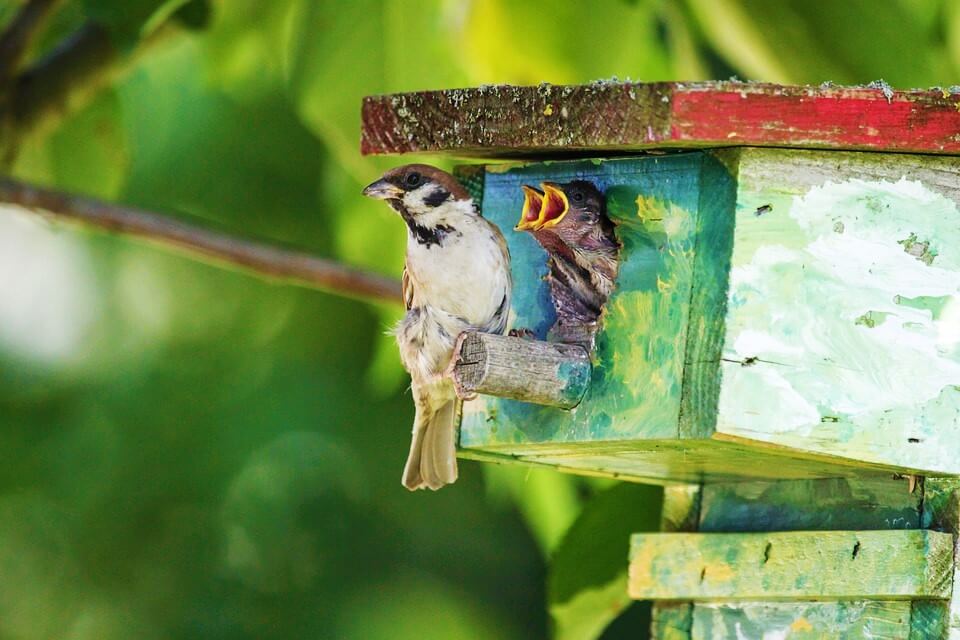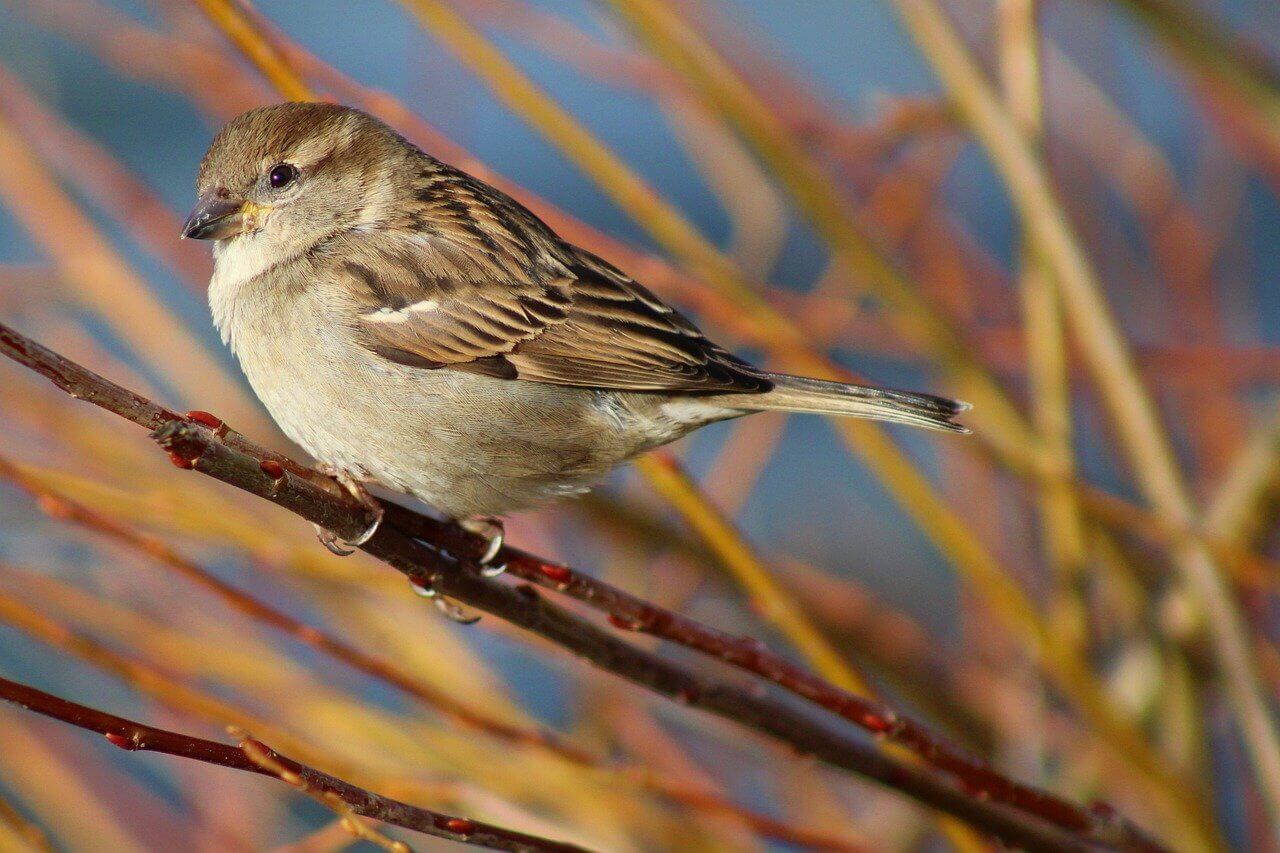Free Birds: The Wonderful Life of Sparrows Outside Laboratories
House sparrows thrive near humans—their name comes from their affinity for nesting in or near human-made structures—and are one of the most common birds in North America. They prosper in both the countryside and cities and have even been spotted searching for food on an observation deck of the Empire State Building.
But coexisting with humans isn’t always safe for these birds. Some of them are abducted from their homes in nature so that experimenters can confine them to laboratories and subject them to cruel tests.
For World Sparrow Day (March 20), learn more about these remarkable birds and how you can help PETA save them from deadly experiments.
Songbird Society
Sparrows are social individuals who stay together for life in groups of up to 40 members. They maintain a sophisticated social structure with recognized leaders and a clear “pecking order.” Each male house sparrow’s place in the hierarchy is determined by the size of a patch of black feathers on his throat and chest—the larger the patch, the higher his ranking in the colony. Higher status comes with plentiful perks, such as safer food sites and bigger and better breeding territories.
Sparrows’ rich social organization helps them live in harmony while they forage for food, groom, and nest together. They communicate with one another by using various chirps and calls, attracting potential partner and alerting others to the presence of predators. They’re loyal to their clan, too. Once accepted into a colony, a sparrow is never banished.
Within this community, sparrows also have their own families. Each male courts his desired partner, bowing and chirping in an energetic dance to attract her attention. Pairs partner for life, building a nest together and sharing parenting chores, including incubating eggs and feeding their babies.
House sparrows’ diet is colorful and varied. They feed on insects known to harm agricultural crops, forage for grains and seeds, and may help with pollination by feasting on the nectar from flowering plants. They’re even known to eat smashed insects off parked cars.
Laboratories Are No Place for Birds
In their natural habitat, sparrows have been known to live for more than a decade. But in the laboratory of Louisiana State University experimenter Christine Lattin, these sensitive individuals would be lucky to last more than a few months.
Lattin kidnaps her victims from their natural habitat after luring them into traps, ripping families apart and disrupting close-knit social groups in the process. After hauling these captives back to her laboratory, she plops them into separate cages, further isolating the naturally social birds before subjecting them to pointless experiments.
In her latest junk tests, Lattin injects sparrows with chemicals to damage their brains. She exposes the birds to various unfamiliar objects that may frighten them in order to record their reactions. In past experiments, she’s used brightly colored items like cocktail umbrellas and plastic eggs. Later, she kills them.
Lattin’s other experiments have included pumping sparrows full of sex steroids and cutting baby sparrows’ heads off to examine their brains.
Help Free the Birds
Lattin’s experiments on sparrows are not only cruel but also do nothing to advance science. Please TAKE ACTION by urging the National Science Foundation to stop funneling taxpayer money into her pointless and deadly experiments:
And if you’re a U.S. resident, please take an additional action for animals in laboratories by supporting PETA’s Research Modernization Deal, which outlines a comprehensive strategy for replacing all experiments on animals with more effective, human-relevant, non-animal methods:




